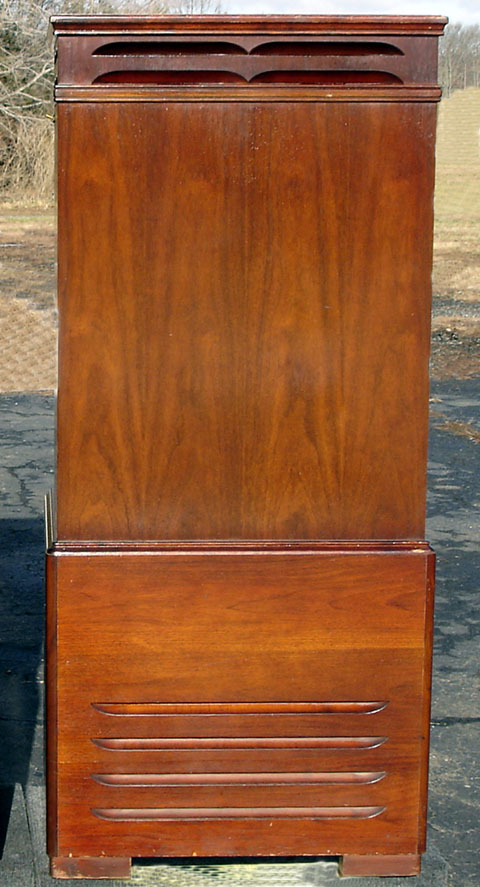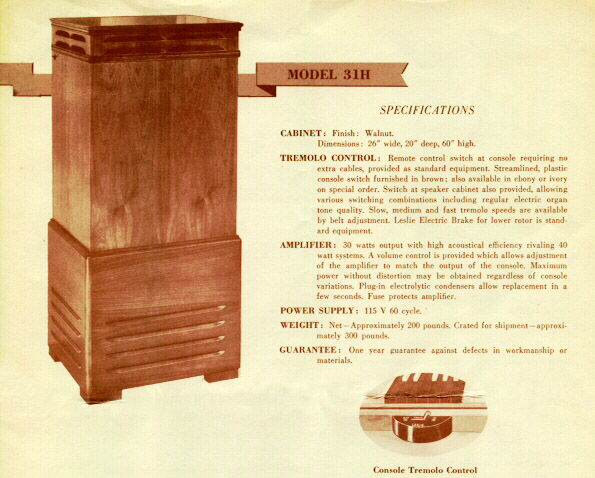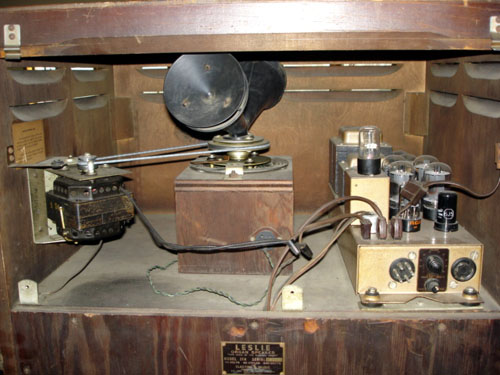

Typical Leslie 31H speaker -
picture kindly donated by Tom Petro
WELCOME
Welcome to the part of the website dedicated to the 31-series of the
Leslie speaker, also known as 'tallboys'.
TALLBOYS?
This designation is borrowed from the world of furniture where a
'tallboy' is a tall, narrow, wooden dresser or chest of drawers. In the world
of Leslie speakers, the term is the nickname for the original size of
speaker produced by Electro Music, 60" tall. The tallboy speakers were
produced from 1940 until the early 60's, however, after 1958 only on special
order.
31H
Model 31H is the model designation most often associated with the
tallboy speaker. The 'H' indicates that the speaker was intended for Hammond
organs, a naming convention also found in later models 21H and 22H. Other
models of the same basic speaker are the 31W and the earlier 31A. These will
be explained more thoroughly in the following.
COMMON FEATURES
All tallboy speakers share a few basic features beside the cabinet size.
The amplifier is rated at 30 watts with four 6L6 tubes and the bass speaker
(woofer) is a 15" field coil type. Oh, and they are all very very heavy :)

Electro Music info sheet circa
1950 - courtesy of Harvey Olsen
WHY
IS THIS IMPORTANT?
Because the tallboy is a great speaker. It has a presence and a sound
not found in the smaller models and there is just something about this very
large wooden box that makes it special. Granted, it is by far the most
impractical Leslie to move around, and even the youngest specimen would be
going on to be 50 years old, but that aside - what's not to love?
On the right is a close-up of the inside of a 31H's top compartment. As can be seen, the horn sits on a wood platform - and the cups (reflectors) are not 'clipped'.
Not surprising, the large box makes for a very strong bass reproduction and the high position of the horn makes the treble very 'present'. The overall sound is naturally also influenced by the field coil woofer combined with the 6L6 amplifier. When pushed to the limit, this amplifier produces a distinct growling sound which actually makes it a bit easier to spot the sound of an older Leslie on a recording.

The inside top of a Leslie 31H, late version. Picture supplied by Tom Petro
Page 2 coming soon!